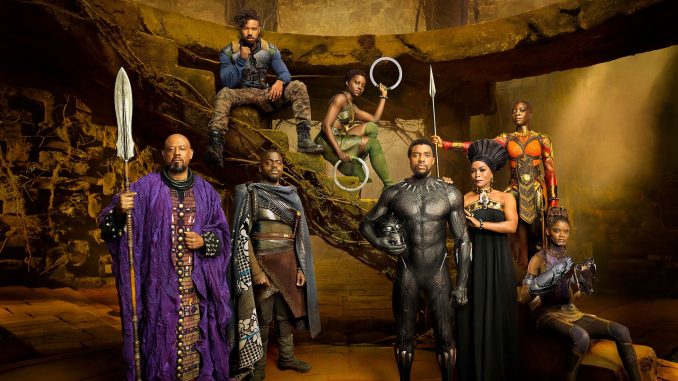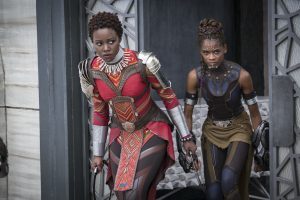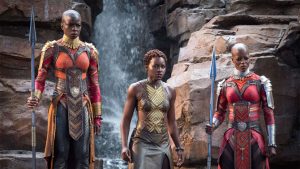
Hanna Da’Mes, Staff Writer|
“Black Panther” is all anyone can talk about lately. It has a 97 percent Rotten Tomatoes score, the highest of any other movie. Marvel has garnered even more respect from fans as well as those not a part of the fanbase with the record-breaking number of people of color represented in a superhero movie. The excitement leading up to the release of the film on February 16, was almost tangible. After the past two years of the public becoming aware of the maltreatment of black people in the film industry, this movie is a welcome shift for 2018. The celebration of African culture is refreshing in the superhero world that consists of mostly white men.

he costumes largely contributed to this celebration, as they paid tribute to African roots. Ruth E. Carter, the costume designer for “Black Panther,” was the first African American woman to be nominated for an Academy Award in costume design for “Malcolm X” and “Amistad.” In “Black Panther,” Carter utilized a concept called “Afrofuturism” to predominantly influence her designs. According to Engadget, Afrofuturism is “science fiction and fantasy that reflects the African diaspora.” This incorporation of African history in mainstream films provides a strong foundation for a more accurate representation of black people in the media. Carter developed these costumes for the people of Wakanda, a fictional place representative of an Africa that had never been colonized by the Dutch or British. In an interview with Forbes, Carter offered her inspiration for the costumes; along with Afrofuturism, she took influence from Afropunk fashion, designers like Issey Miyake, Stella McCartney, Gareth Pugh, and African tribes in history, such as the Masai, the Suri, and the Northern African Tuareg tribes.

Wakanda is a technologically advanced society, and Carter wanted the costumes to properly show- case that. She didn’t want to go overboard or do something that has been done before such as go down the outrageous and impractical StarTrek route. The outfits used in “Black Panther” for the border tribe warriors, Carter mentions in the interview with Forbes, were lined with a material called “Vibranium,” Wakanda’s richest metal, signifying wealth and advancement.
When asked about the purpose for her designs and how she wants them to impact the industry, Carter says that she always comes back to women. In “Black Panther,” black women are empowered in superhero contexts like never before with costumes that showcase their range of abilities, power, and strength.
Carter explained the film industry’s emphasis on the “sexiness” of women’s costumes, especially in the superhero genre, and while she doesn’t expect or necessarily want to change that, she does want to take active steps in changing the presentation of women as solely sexual objects through their clothing. The women in “Black Panther” are covered in material, but Carter wants to illustrate how women can be considered sexy in their strength and abilities, and not simply from the lack of clothing worn. Additionally, the power of the characters in the film is reflective of the power of women in African societies.
“Black Panther” has made history in its genre. There is comfort, hope, and a sense of self that is now accessible for people of color who long for representation in a world of science fiction. Black and brown kids can now see themselves as strong, ambitious, and kind superheroes. Marvel would be crazy not to follow up with more representation of people of color.
Leave a Reply